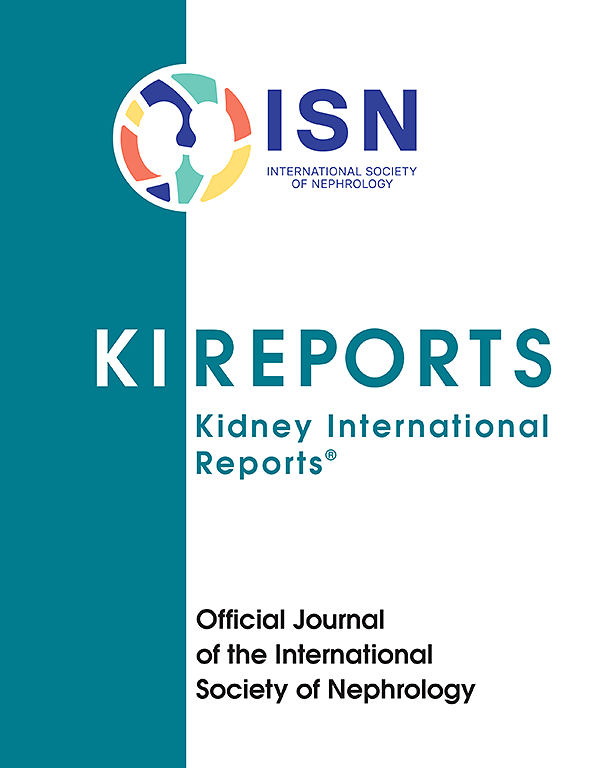Pilot Study of Diagnostic Performances of Vascular Biomarkers Soluble fms-Like Tyrosine Kinase and Placental Growth Factor in Scleroderma Renal Crisis
IF 5.7
2区 医学
Q1 UROLOGY & NEPHROLOGY
引用次数: 0
Abstract
Introduction
Scleroderma renal crisis (SRC) is a major vascular complication of systemic sclerosis (SSc), associated with high morbidity and mortality. In this retrospective study, we evaluated the potential prognostic and diagnostic roles of angiogenesis molecules, placental growth factor (PlGF), soluble fms-like tyrosine kinase 1 (sFlt-1) and sFlt1/PlGF ratio as biomarkers in SRC.
Methods
Sera samples from 27 patients with a history of SRC (SSc-SRC+) were collected following event occurence. Biomarker levels were assessed using an electrochemiluminescence immunoassay and compared with age- and sex-matched patients with SSc-SRC− (n = 24), hemolytic uremic syndrome (HUS) (n = 27), malignant hypertension (MHT) (n = 22), and donors (n = 61). Areas under the receiver-operating-characteristic curves (AUC) were used to evaluate diagnostic accuracy. Long-term dialysis risk was evaluated using a Cox model.
Results
The median (interquartile range [IQR]) PlGF (pg/ml) was significantly higher in the serum of patients with SSc-SRC+ (42.1 [21.4–51.8]) compared with donors (14.7 [11.8–17.9]), those with SSc-SRC− (18.5 [14.7–21.5]) (P < 0.0001), those with HUS (22.8 [19.5–29.6]), and those with MHT (25.5 [17.2–39.3]) (P < 0.0001). In a multivariate regression adjusting for multiple confounders, PlGF was associated with higher SRC risk with an odds ratio of 1.08 [1.01–1.22], (P = 0.034). A PlGF level above 24.5 pg/ml revealed an AUC of 0.81 (confidence interval [0.68–0.94]), a specificity of 95%, and a sensitivity of 67% for SRC diagnosis. Eleven patients with SSc-SRC+ reached end-stage kidney failure with significantly higher PlGF (42.9 [22.4–78.2]) compared with patients who were dialysis-free (19.7 [15.6–29.7], P = 0.03).
Conclusion
Serum PlGF may identify the risk of SRC occurrence among patients with SSc with a good specificity and represents a potential tool for long-term dialysis risk evaluation.

求助全文
约1分钟内获得全文
求助全文
来源期刊

Kidney International Reports
Medicine-Nephrology
CiteScore
7.70
自引率
3.30%
发文量
1578
审稿时长
8 weeks
期刊介绍:
Kidney International Reports, an official journal of the International Society of Nephrology, is a peer-reviewed, open access journal devoted to the publication of leading research and developments related to kidney disease. With the primary aim of contributing to improved care of patients with kidney disease, the journal will publish original clinical and select translational articles and educational content related to the pathogenesis, evaluation and management of acute and chronic kidney disease, end stage renal disease (including transplantation), acid-base, fluid and electrolyte disturbances and hypertension. Of particular interest are submissions related to clinical trials, epidemiology, systematic reviews (including meta-analyses) and outcomes research. The journal will also provide a platform for wider dissemination of national and regional guidelines as well as consensus meeting reports.
 求助内容:
求助内容: 应助结果提醒方式:
应助结果提醒方式:


